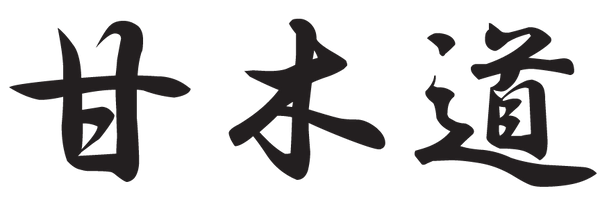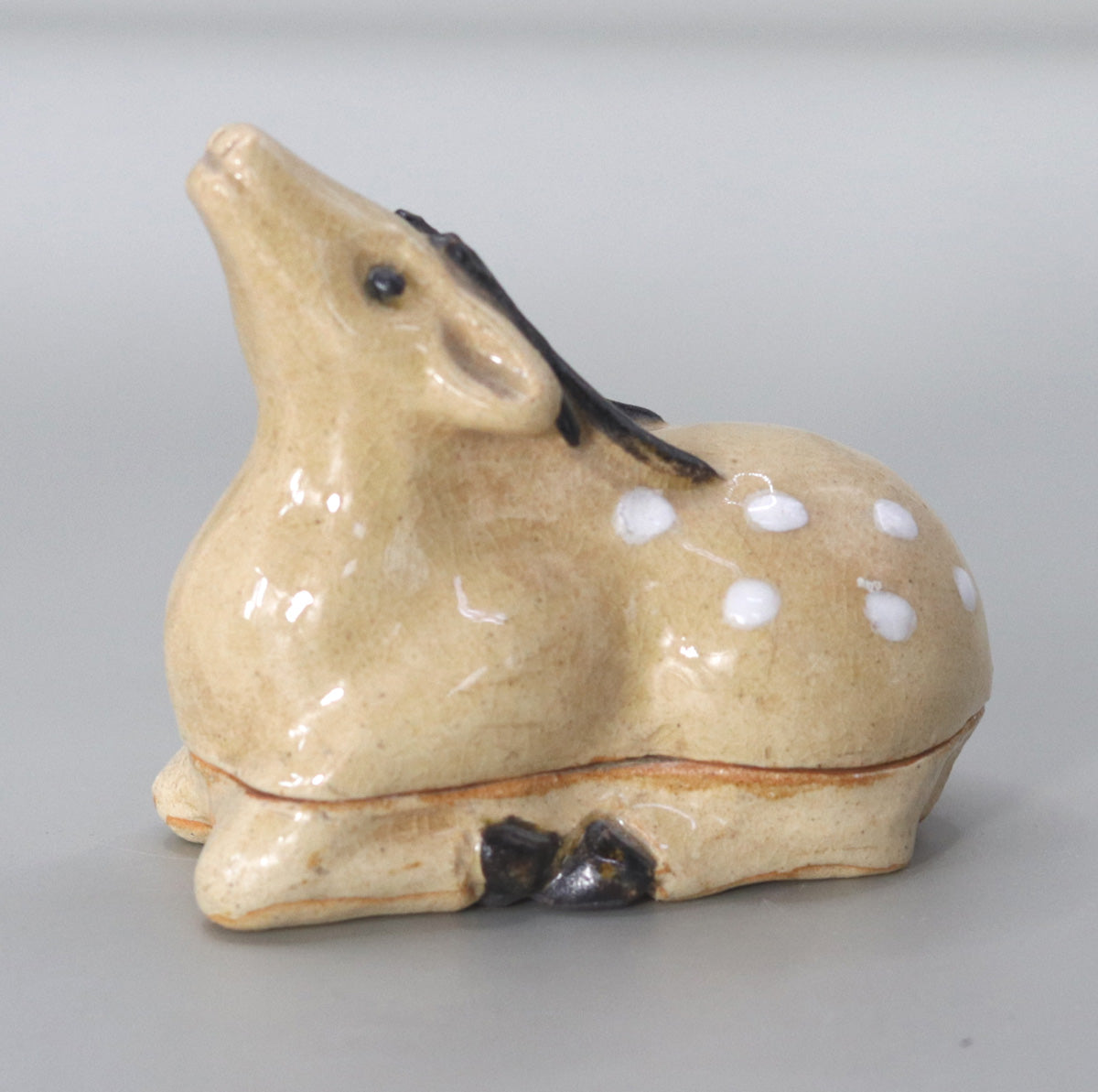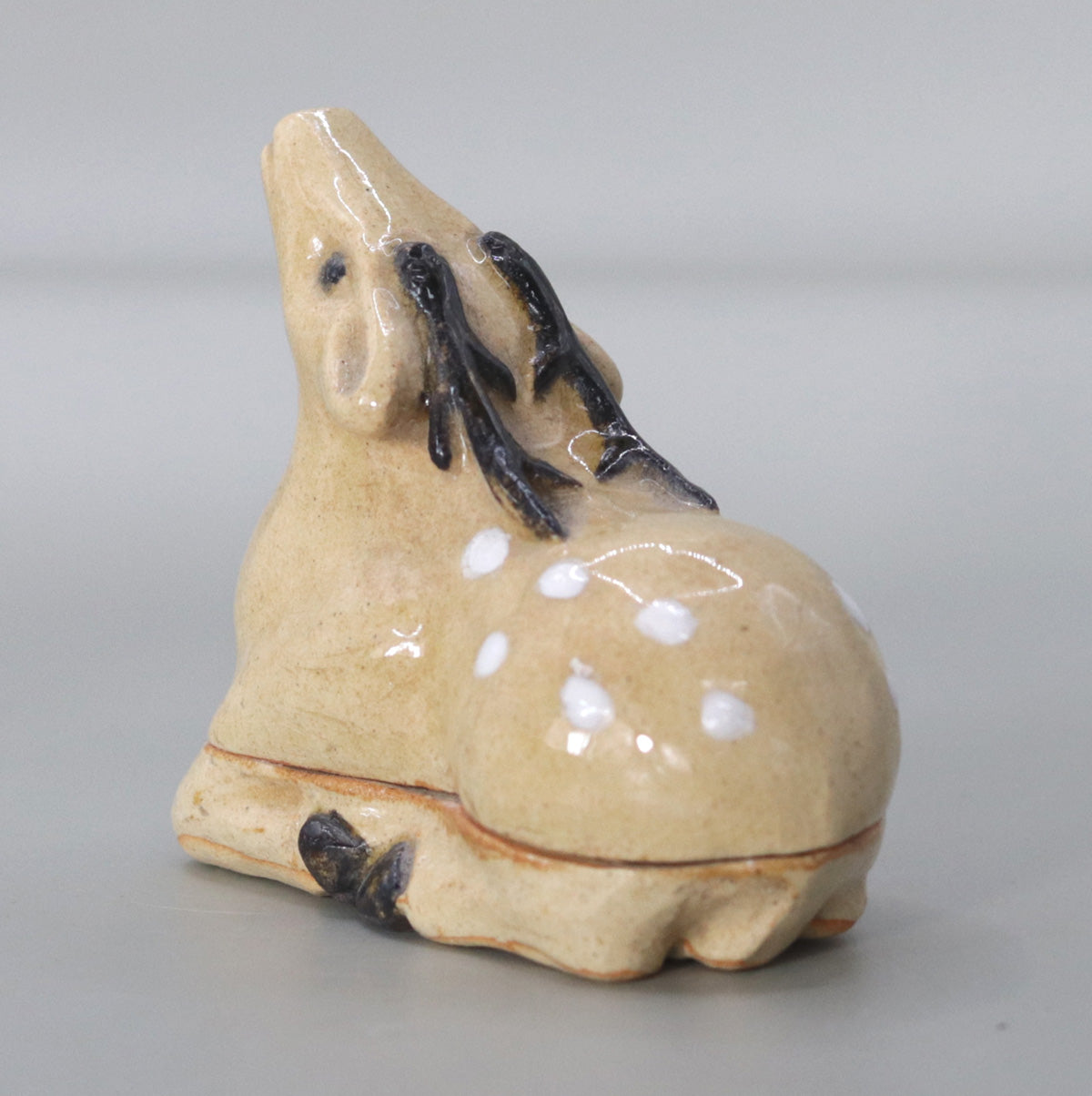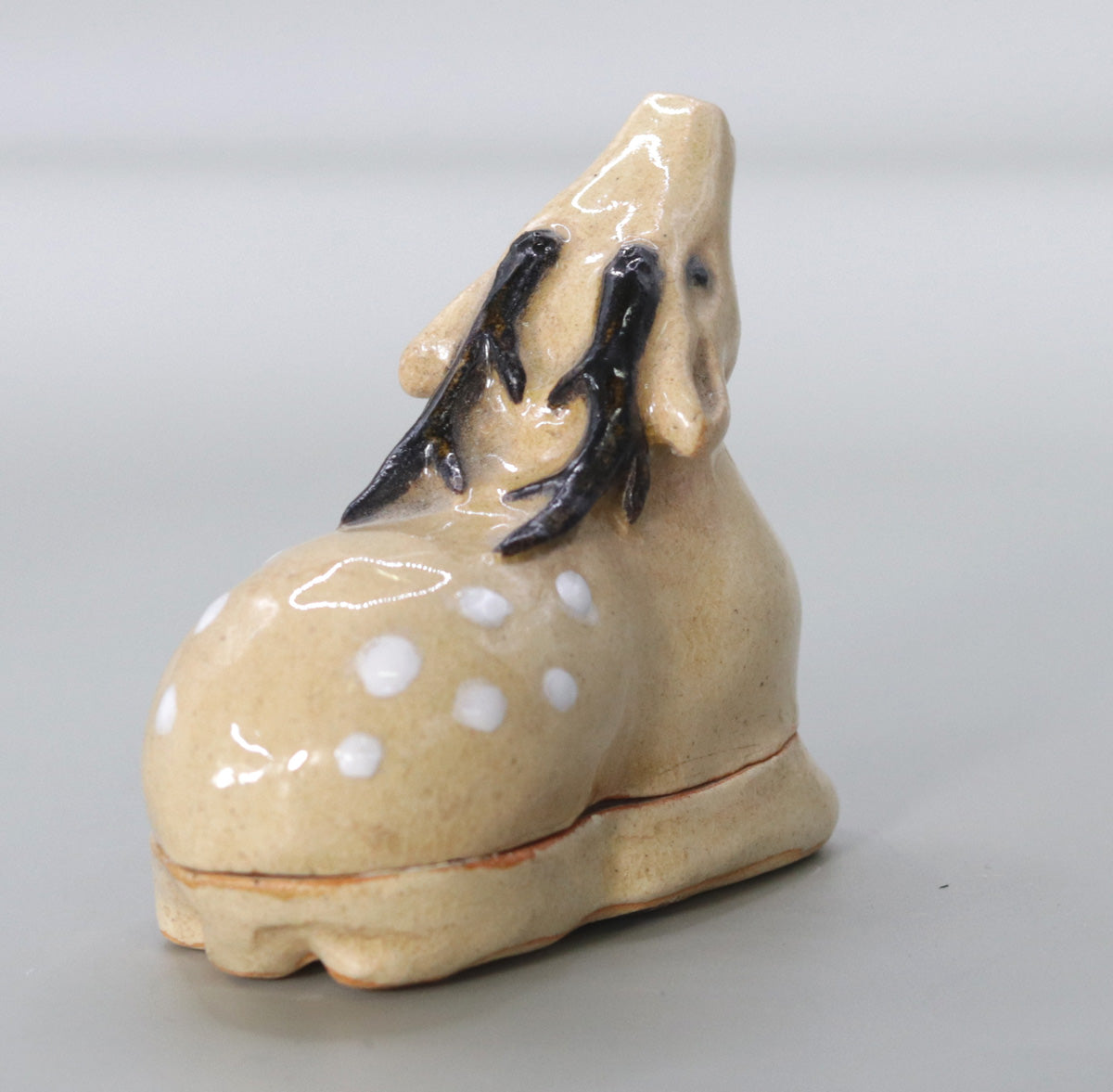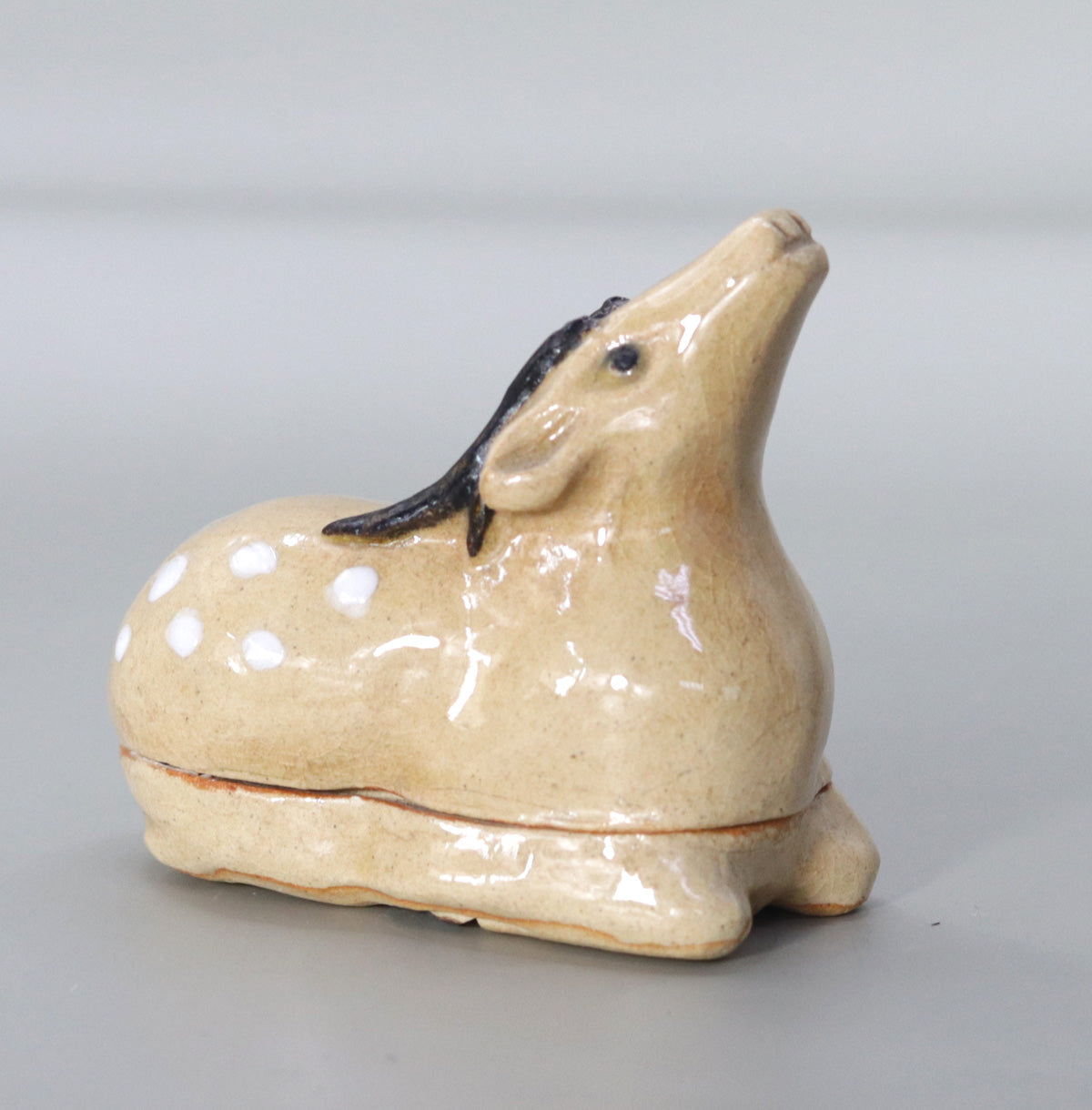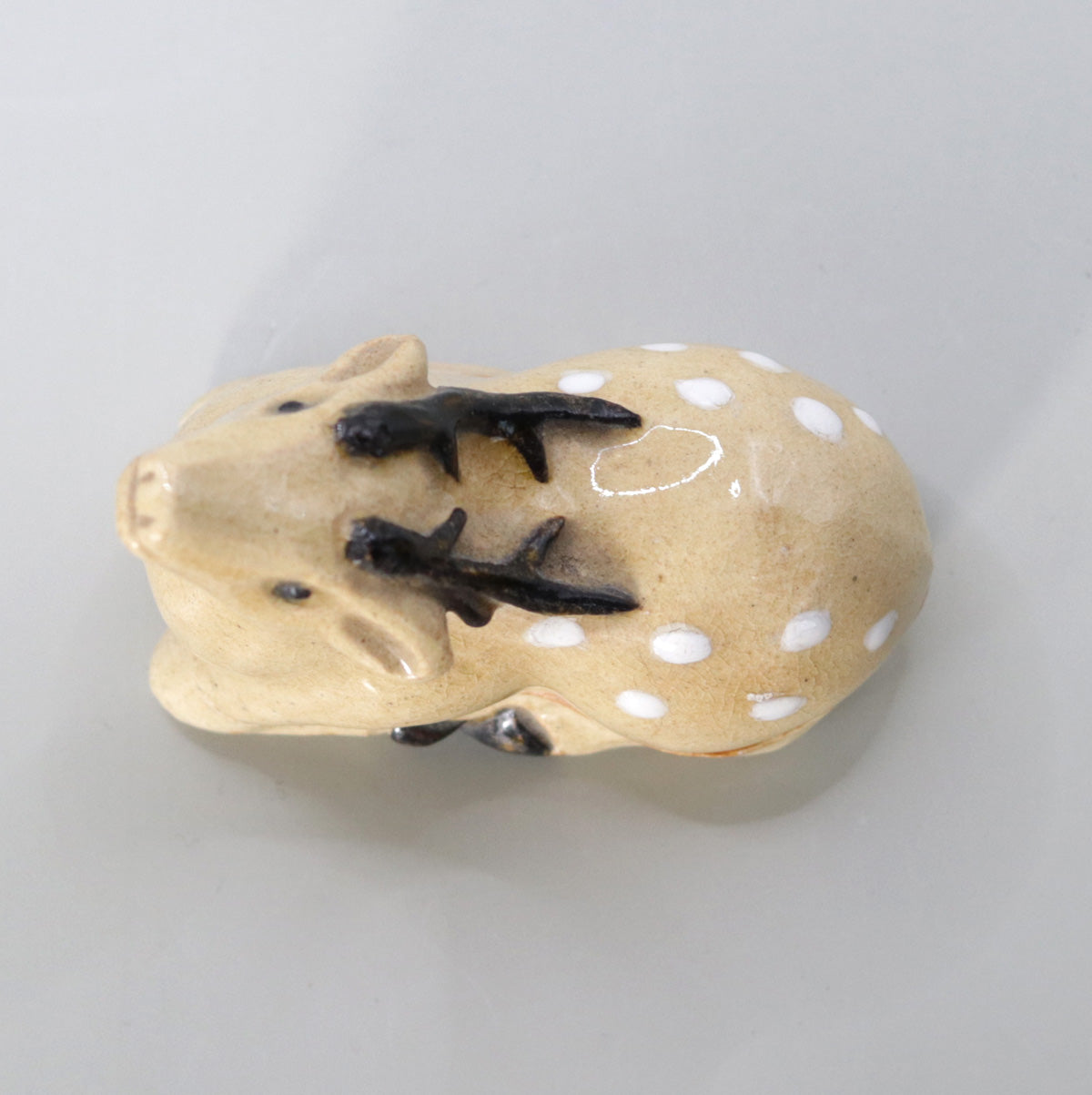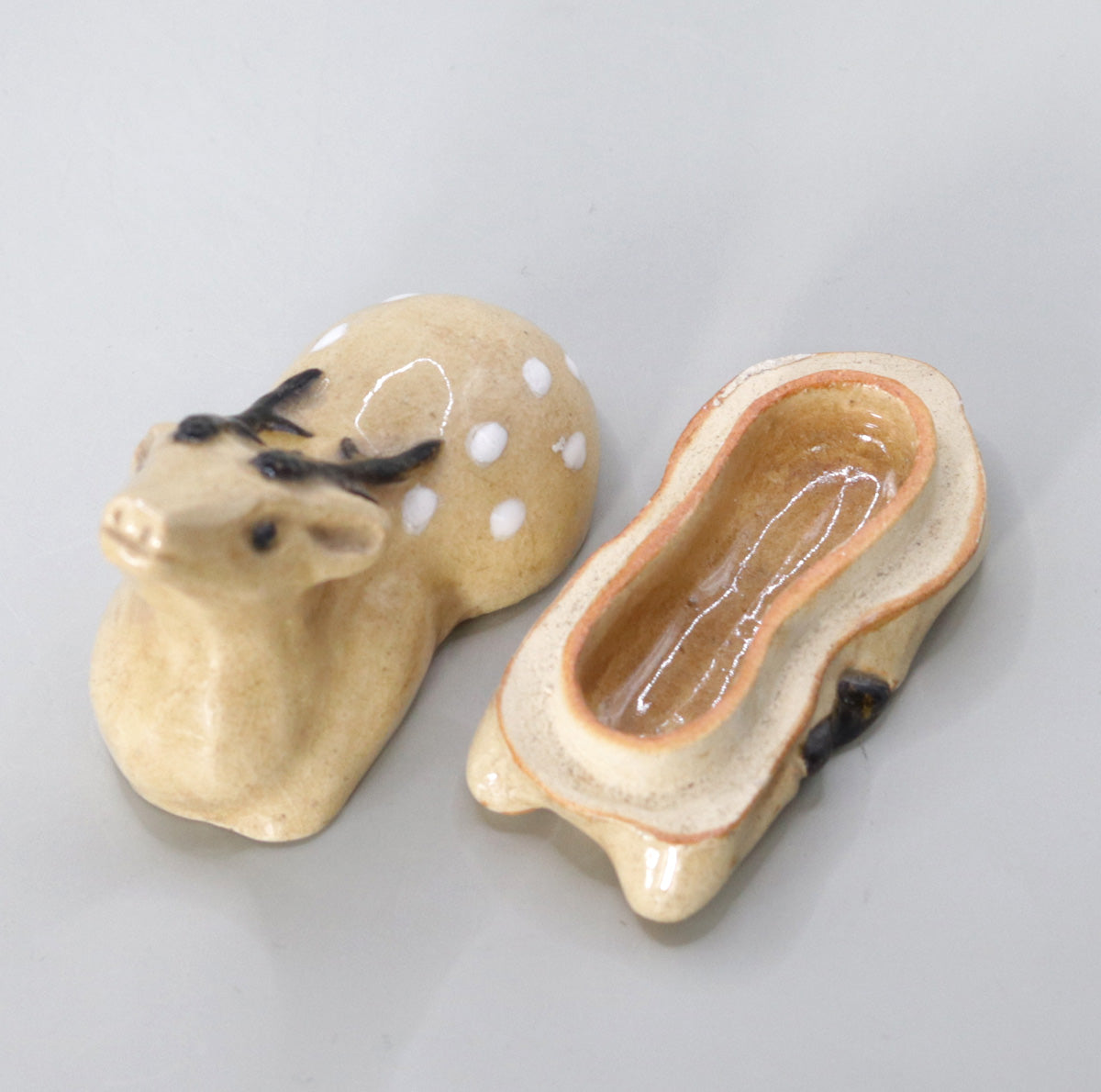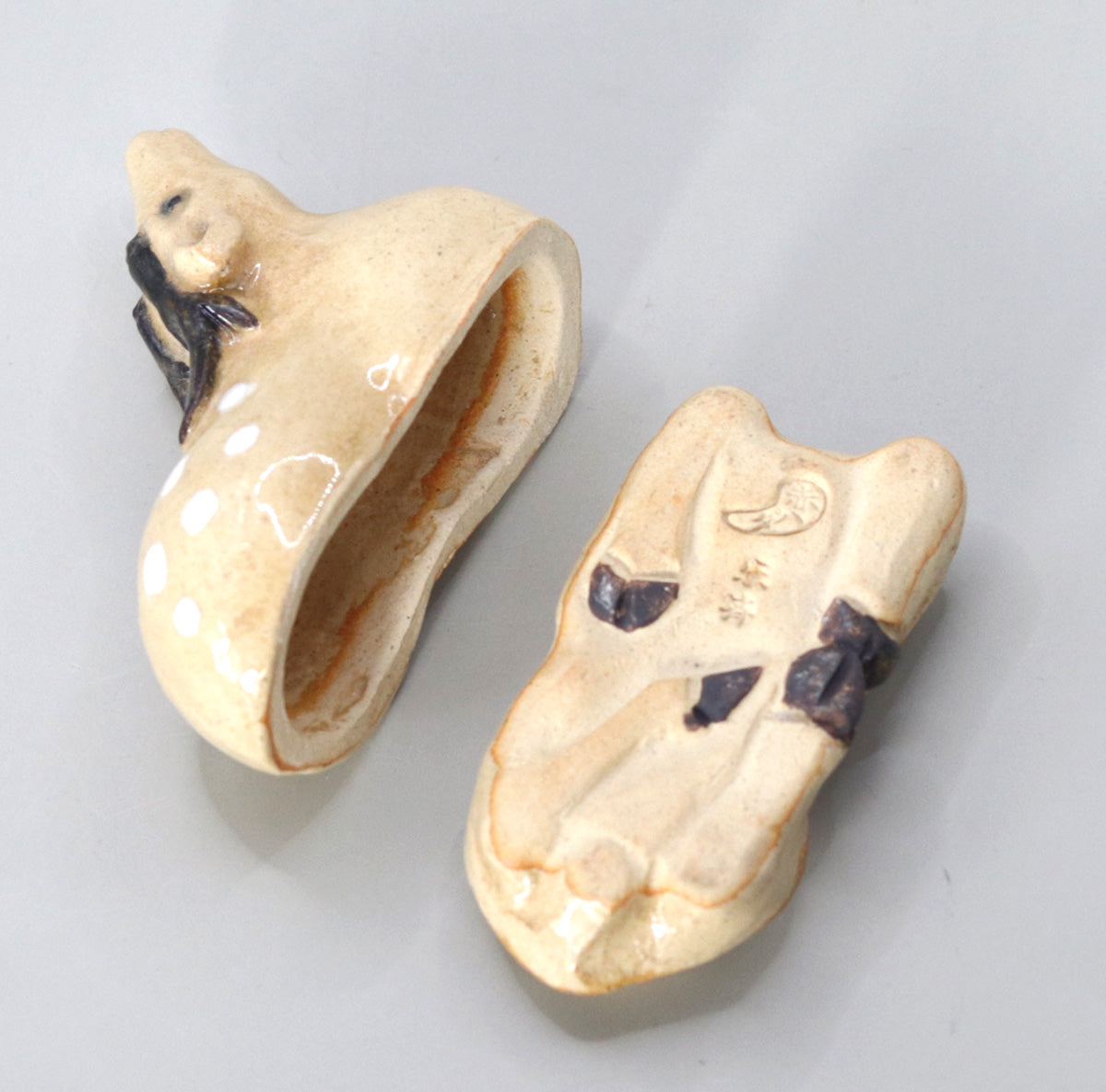Deer incense holder by Rakusai Onishi
Deer incense holder by Rakusai Onishi
Couldn't load pickup availability
Width: 8.0cm x 4.0cm Height: 7.4cm
Deer incense holder (Shika-kogo) Made by Rakusai Onishi
--Hold the mysterious presence of the sacred deer of Nara in the palm of your hand--
1. Overview of the work
This deer-shaped incense container was made by Onishi Rakusai, a successor to the Akahada ware of Nara. Its plump body and long neck, with its tail seemingly lifted, create a striking appearance that evokes the cry of a female deer echoing through the mountains. It is made in two parts, top and bottom, with the body acting as the lid and the hollow inside the body to hold the incense wood.
2. Form and design
The spirit of the figure <br data-start="235" data-end="238">Five white spots reminiscent of a young fawn are placed on the back of the piece, and the contrast with the soft yellow-beige flesh-colored glaze expresses the freshness of a young fawn. The movement of holding its head high is reminiscent of the distant cry of a deer calling to its mate on the autumn peaks, adding a seasonal touch to the tea ceremony.
Painting in the details <br data-start="355" data-end="358">The mane and hooves are given a deep black-brown color using iron glaze, providing a firm accent to the warm and elegant background color. The pale yellow glaze applied to the entire piece gives it a gentle luster derived from narai ash, with a subtle hint of the soft reddish color of the "akahada clay" that is unique to Akahada ware.
3. Techniques and characteristics of Akahada ware
Akahada ware was first produced in Yamatokoriyama, Nara, in the early Edo period, and is known for the master craftsman Okuda Mokushiro's perfection of a wide range of techniques at the end of the Edo period. Its main feature is the use of white makeup, iron painting, and colored painting to sublimate the elegance of Nara-e and Yamato-e painting into tea ware. Onishi Rakusaigama follows in this tradition, and has been praised as "Mahoroba tea ware" for its lovely painting and warm base color.
4. Cultural background of the deer motif
Deer have been symbols of Nara since ancient times as messengers of the Kasuga Taisha Shrine, and are also written about in the Man'yoshu and Kokin Wakashū as heralds of the coming of autumn. In the tea ceremony, deer incense containers were used in the "nagori tea ceremony" leading up to the autumn Kuchikiri ceremony, creating a style that brings the ethereal scenery of the mountains and fields into the room. The white spots on this work represent a fawn born in early summer, but its raised head and crowing evoke the solitude of autumn, making it an exquisite expression that can be used across seasons.
5. Mr. Onishi Rakusai's approach to pottery
Onishi Rakusai (Yatsushiro) believes in "recreating Nara paintings, not just copying them," and he finishes his designs, which embody the spirituality of the land, such as deer, chrysanthemums, and maple leaves, with gentle glazes that blend in with modern kitchens. He uses clay from Mt. Akahada, which he digs himself, and as he says, "the taste of the clay is the breath of the pottery," he mixes glazes by determining the iron and lime content of the material. He uses low firing temperatures to allow the soft clay to breathe, and he values the warmth of the pottery when held in the hand.
6. Arrangements at the tea ceremony
Season : Perfect for mid-autumn tea ceremonies and morning tea ceremonies during frosty times.
Set of accessories : Scroll "A deer cries, treading through autumn leaves in the deep mountains...", autumn flowers arranged in a vase at slightly different heights, and an incense holder placed on the hearth or on a shelf in the middle of the light tea ceremony room.
Incense : The use of pieces of aloeswood or incense paste with a hint of musk brings out the subtle sweetness of the deer.
7. Summary
This piece is a masterpiece that condenses the gentleness and solitude of the sacred deer of Nara into a palm-sized piece. The gentle and elegant red glaze and simple sketching ability unique to Onishi Rakusai, combined with the incense smoke that floats the moment you open the incense container, quietly create a tranquil and wabi atmosphere. Not only can it be used for tea ceremonies, but it can also be used as a floor decoration or a figurine for the Boys' Festival, gently speaking to the changing seasons and the scenery of Nara.
Share
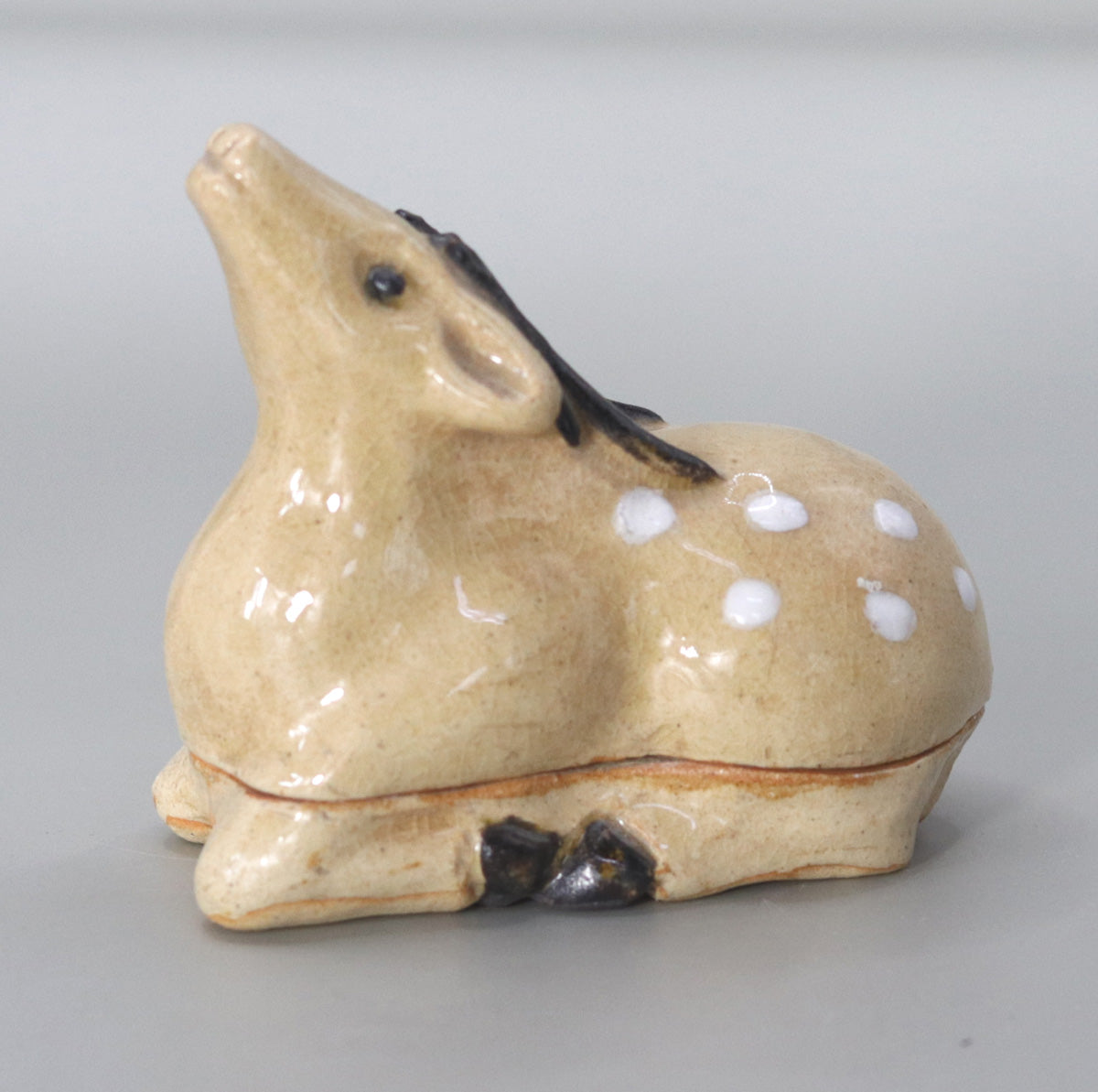
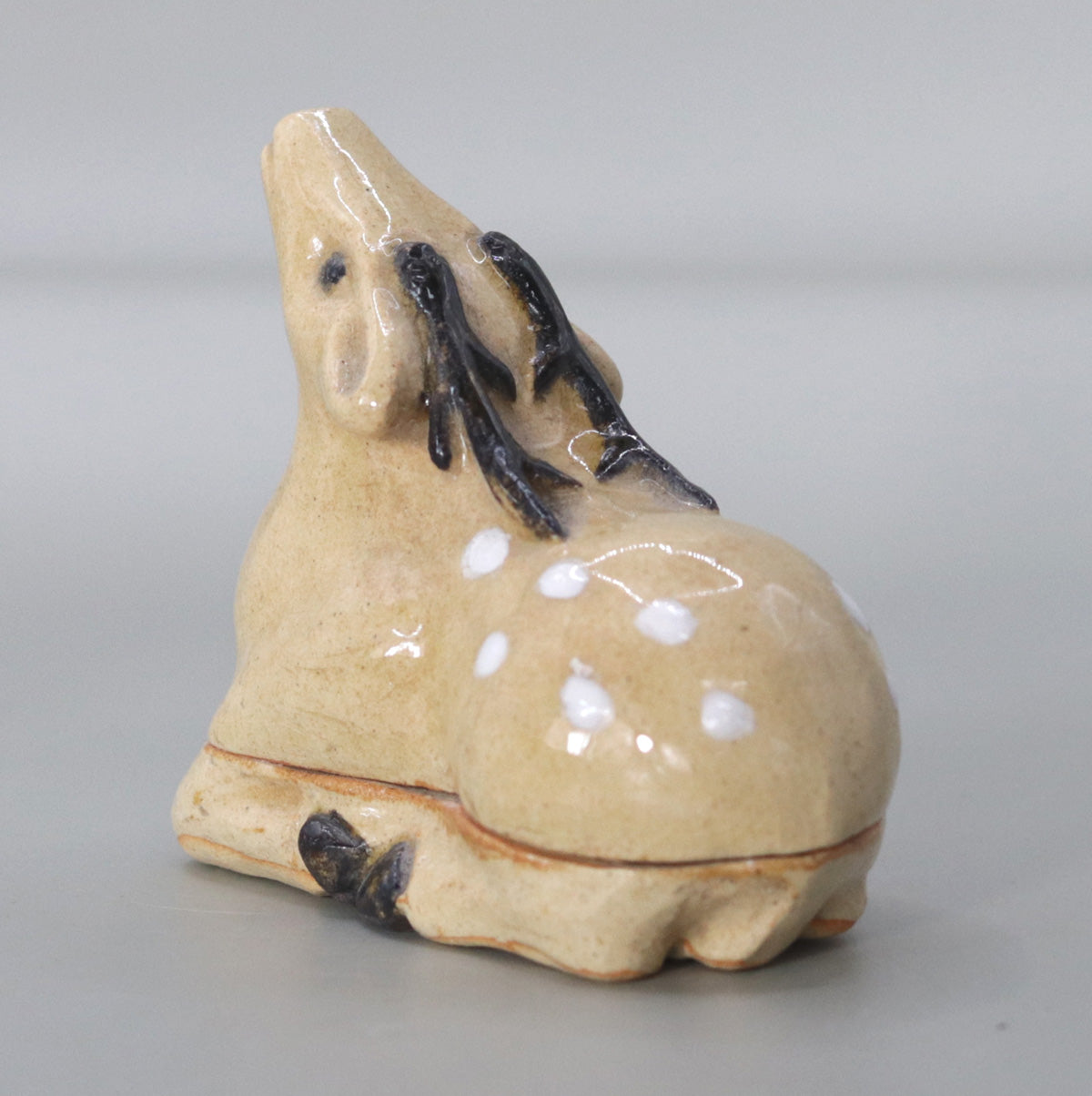
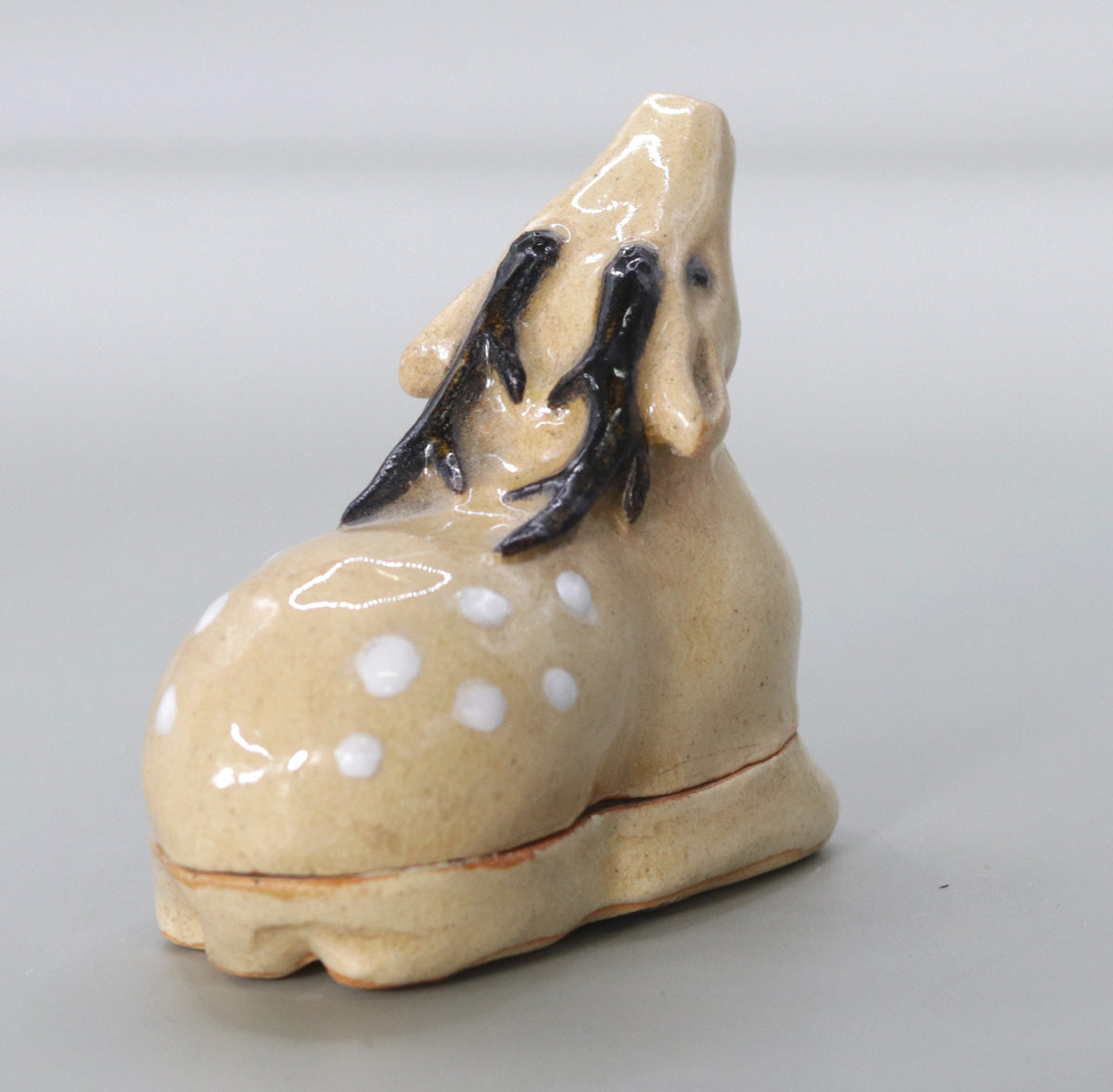
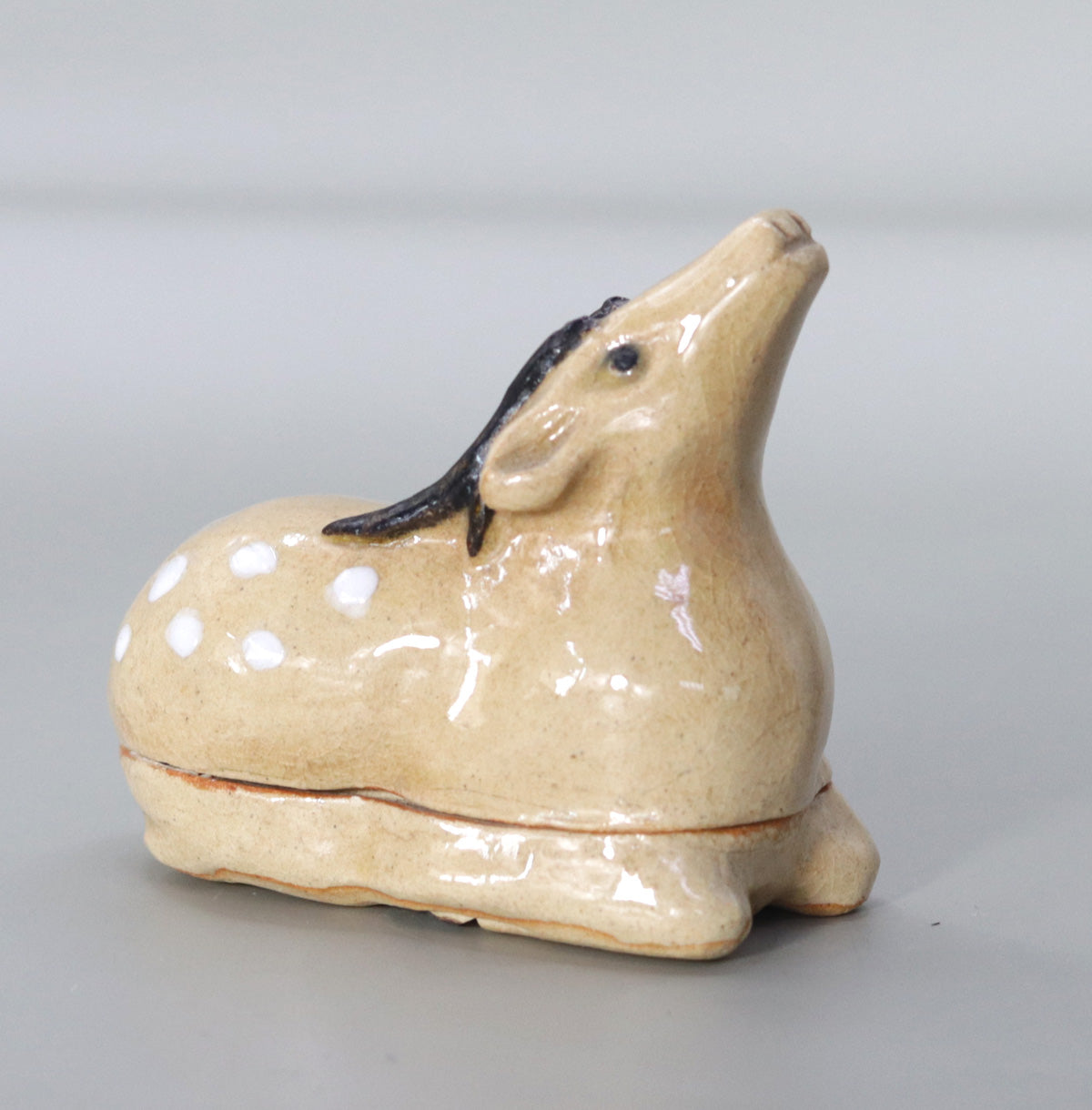

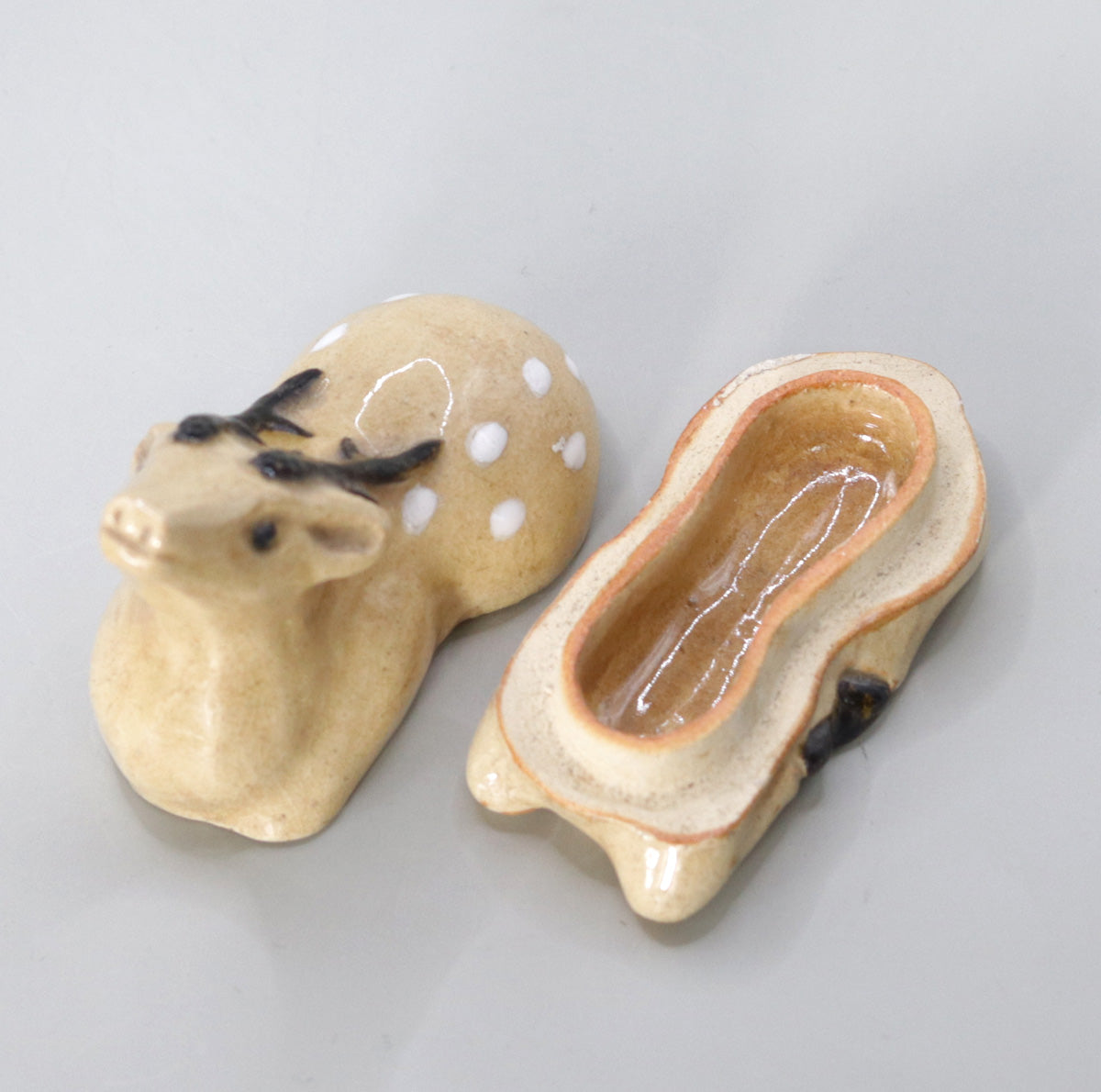
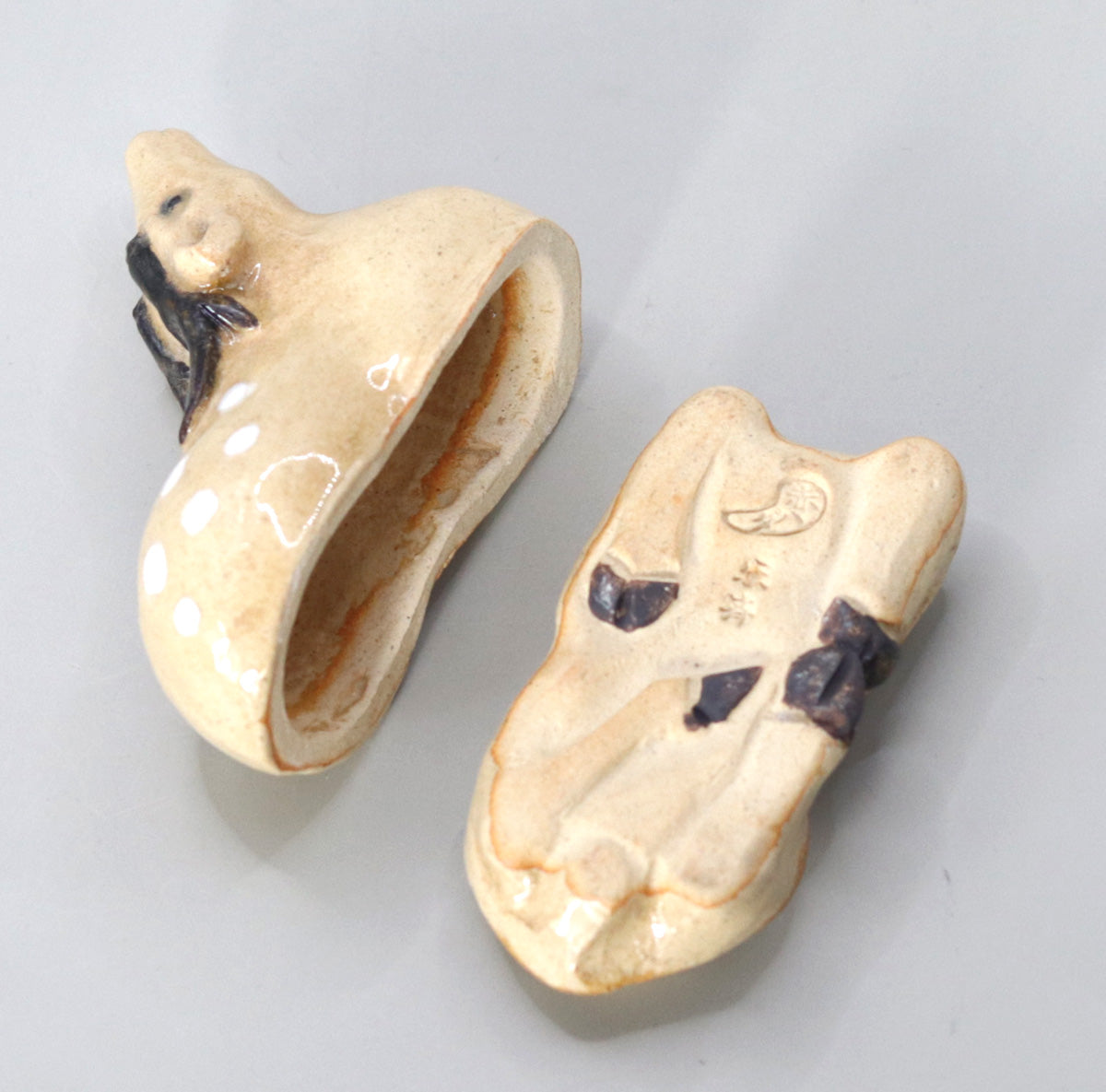
Multi-Column
-
[I will send it to you quickly and carefully]
We carefully package each product in a way that suits it best.
Also, delivery times vary depending on the piece (vessel, etc.).
Items that already come with a box will be shipped within 1-3 days of the order date.
For items that require a box to be made after your order, it will take approximately 30 days for production to be completed and then shipped.
In either case, once we have confirmed your order, we will contact you by email to inform you of the delivery date.
-
[Requests when purchasing pottery]
Even products that look the same may differ slightly in color, shape, size, etc.
The way the glaze is used, the power of the kiln, the firing method, the season, and the humidity also affect the appearance of the pottery.
Please understand the individuality of each piece of pottery and enjoy the unique warmth of handmade.
